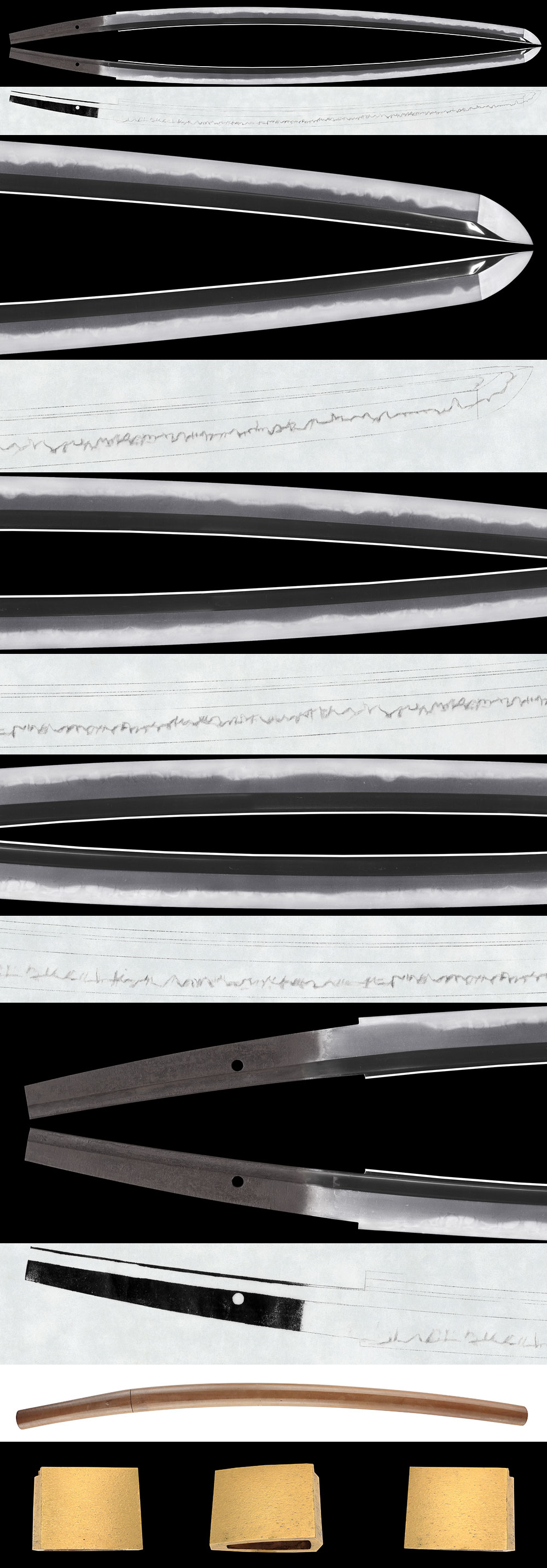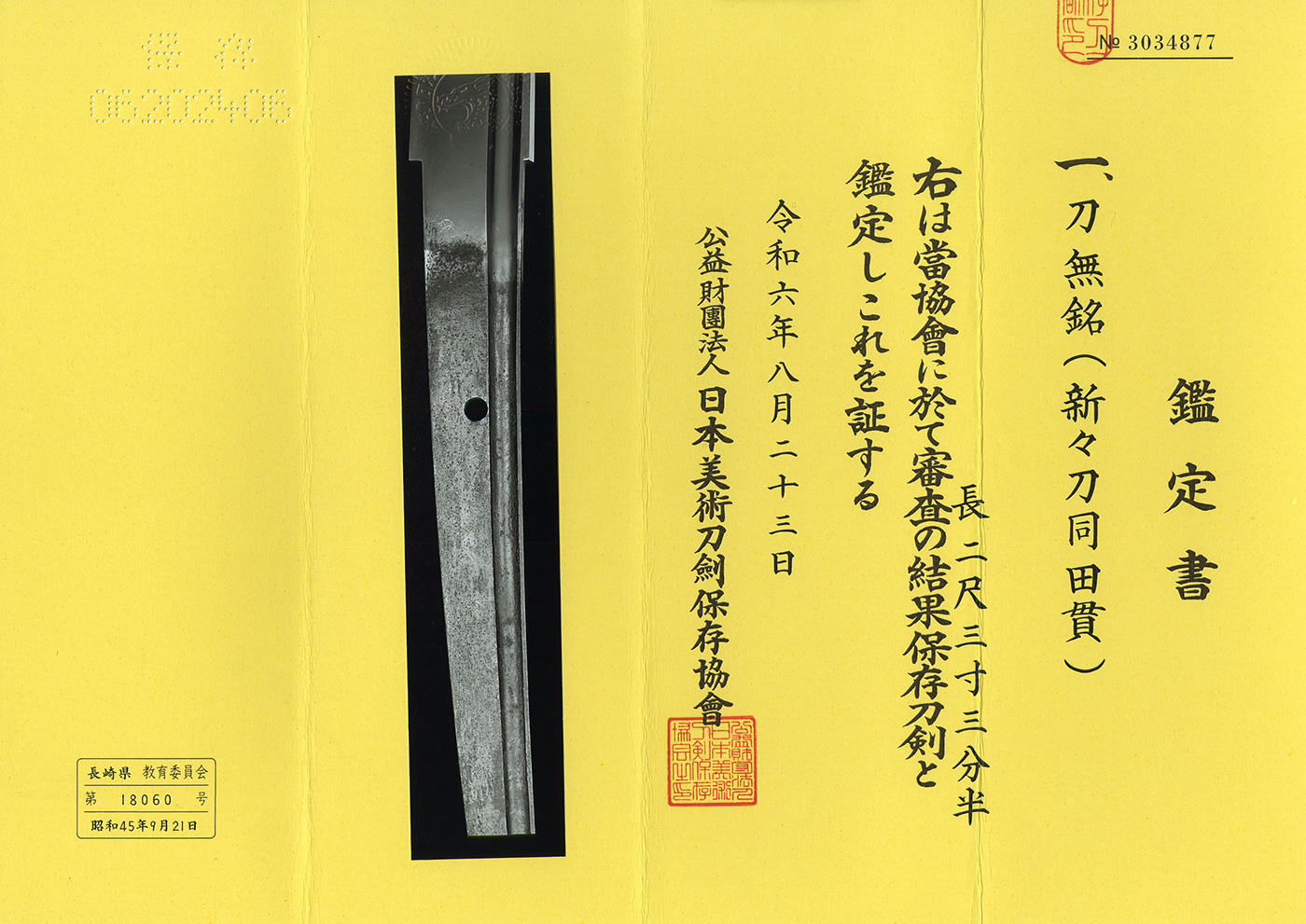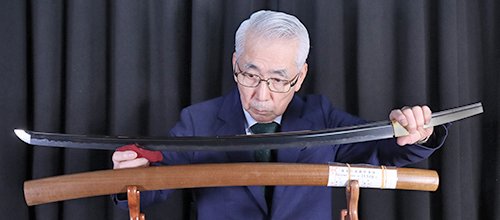Ordering number:24058
Katana in Shirasaya (NBTHK Hozon Token)
Signature: Mumei (Unsigned, Shinshinto Dotanuki)
無銘(新々刀同田貫)
At our company, we rank swords by the skill of the swordsmith as Saijyo Saku, Jyojyo Saku, Jyo Saku, and Regular Saku.
This particular sword is ranked as Jyo Saku among unsigned Shinshinto Dotanuki works.
Habaki: Gold-colored single habaki
Blade Length: 70.8 cm (27.87 in)
Curvature: 2.0 cm (0.79 in)
Mekugi Hole: 1
Width at Base: 3.33 cm (1.31 in)
Width at Tip: 2.38 cm (0.94 in)
Thickness: 0.75 cm (0.30 in)
Sword Weight: 785 grams (1.73 lbs)
Era: Edo period
Shape: The blade is wide with a thick spine and a regular kissaki. It features bo-hi (grooves) carved on both sides.
Jigane: The ko-itame hada (small wood grain pattern) is well-forged, resulting in a nearly plain appearance.
Hamon: A nie-deki pattern of pointed gunome and reverse gunome, with pointed tips appearing. The hamon is irregular, including in the boshi (tip).
Features: This sword was appraised as a Shinshinto Dotanuki by the Sword Museum. However, based on the straight hamon at the ha-machi (base of the blade) and the irregularity in the boshi, I believe it may have been made by Fujiwara Munemasa of Dewa Province. The Dotanuki school typically features a more irregular ha-machi and a more rounded boshi. It is possible that the sword was left unsigned to give it the appearance of an older blade.
Aoi Art’s Comment: This sword has substantial weight and a deep curvature, giving it the appearance of an old blade at first glance. It is likely that the original signature was removed to make it seem like a more valuable antique. It’s unfortunate, as the blade would have been better preserved with its signature. Nonetheless, it remains a finely made sword.
Historical Background: The late Edo period was a tumultuous time marked by intense conflicts between imperial loyalists and supporters of the shogunate, leading to many battles.
NBTHK Hozon Token
Aoi Art Authenticated
Whole Oshigata
Price:600,000JPY
Order Form
Related Items:
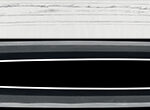 Katana: Kyushu Higo Dotanuki Kozukenosuke(NBTHK Tokubetsu Hozon Token)
Katana: Kyushu Higo Dotanuki Kozukenosuke(NBTHK Tokubetsu Hozon Token)
s-150x146.jpg) Katana:Ho-ki Kami Taira Ason Masayuki(NBTHK Tokubetsu Hozon Token)
Katana:Ho-ki Kami Taira Ason Masayuki(NBTHK Tokubetsu Hozon Token)
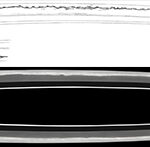 Katana: Hoki Kami Ason Masayuki
Katana: Hoki Kami Ason Masayuki
 Katana:(Kiku mon) Dewa Kami Hōkyō Minamoto Mitsuhira (NBTHK Tokubetsu Hozon Token)
Katana:(Kiku mon) Dewa Kami Hōkyō Minamoto Mitsuhira (NBTHK Tokubetsu Hozon Token)
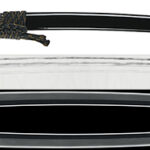 Katana:Mumei (attributed to Den Hosho).(NBTHK Tokubetsu Hozon Token)
Katana:Mumei (attributed to Den Hosho).(NBTHK Tokubetsu Hozon Token)
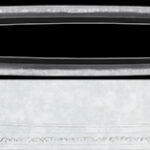 Katana:Echigo Kuni Mitsuoki(NBTHK Tokubetsu Hozon Token)
Katana:Echigo Kuni Mitsuoki(NBTHK Tokubetsu Hozon Token)

